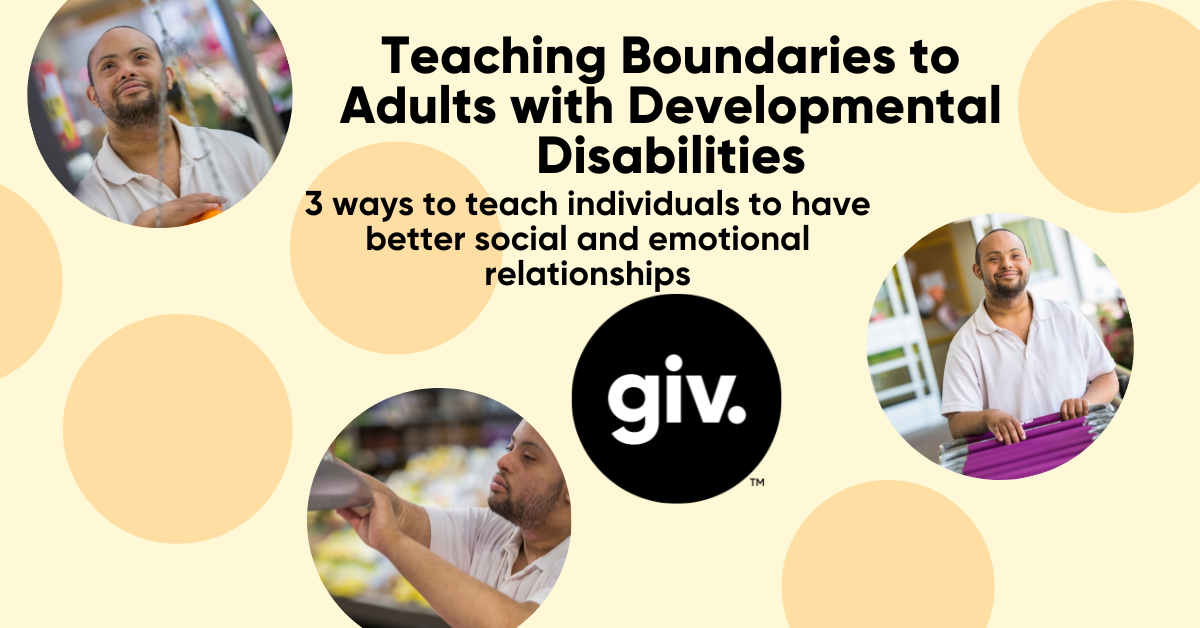Teaching boundaries to adults with intellectual and developmental disabilities (IDD) is an important life skill for learning to sit for job interviews, have meaningful friendships, and to be an an integrated member of their local community. These skills can often be tricky to navigate but you can eventually see positive changes over time.
Teaching Boundaries to Adults with Developmental Disabilities:
Teaching boundaries to individuals with IDD might seem like an overwhelming task but it really doesn’t need to be. The best way to teach these skills is through modeling, role play, and social stories. These skills can often be discussed at great length at home, and then practiced outside the home in real life applications.

Modeling Appropriate Behavior:
When modeling, demonstrate the behaviors you want to see. This could be practiced at meal times by demonstrating what behaviors are and are not appropriate at the table. You could demonstrate examples of when it is and is not okay to touch someone by demonstrating to them when it’s okay to touch someone in a casual conversation or getting their attention with a small tap on the shoulder. You likely know which behaviors specifically need improvement for the person you’re working with, so modeling the appropriate behaviors for their specific needs is an easy way to make progress.
Role Play Real Life Interactions:
Role play is when you and the person with IDD act out the real life scenarios in your home. You can practice going back and forth with how to make an appropriate greeting, how to engage with others in a grocery store, or even act out introducing yourself to someone new you meet in the community. Practicing these scenarios again and again will help to build better skills over time.

Social Stories for Teaching Boundaries to Adults with IDD:
Social stories are another amazing option for teaching boundaries and appropriate interactions. Social stories are books you can either make yourself at home, or purchase online that illustrate appropriate social interactions. These types of stories help your loved one to see how they should engage with others and also how others should engage with them. Here are some great options for social stories that you can purchase online:
- Let’s Talk About Boundaries, Bodies, Consent, and Respect
- The Not-So-Friendly-Friend: How to Set Boundaries for Healthy Relationships
- Social Stories: Aggressive Behaviors
- Social Story Readers
An Important Caveat:
So much of an individual’s life with an IDD is getting them to fit into the “norm” of society. It’s important to recognize the balance of teaching them how to be safe members of society in their own bodies, without forcing them to be individuals they were never meant to be. As a society of typically developing adults there is a call and a responsibility on our end to be more inclusive and accepting of those with IDD as they currently are without having to force them into our societal norms.
Many adults with disabilities, particularly those in the Autism community believe that there is a lot more work that can be done to accept those who are neuro-divergent or have IDD. They feel much of their life involves masking to accepted by the majority of society.
The best scenario is likely somewhere in the middle. We need to teach individuals with disabilities how to be safe around other people, and how to keep themselves safe within society, while also leaving room for them to be the unique individual they were created to be.







